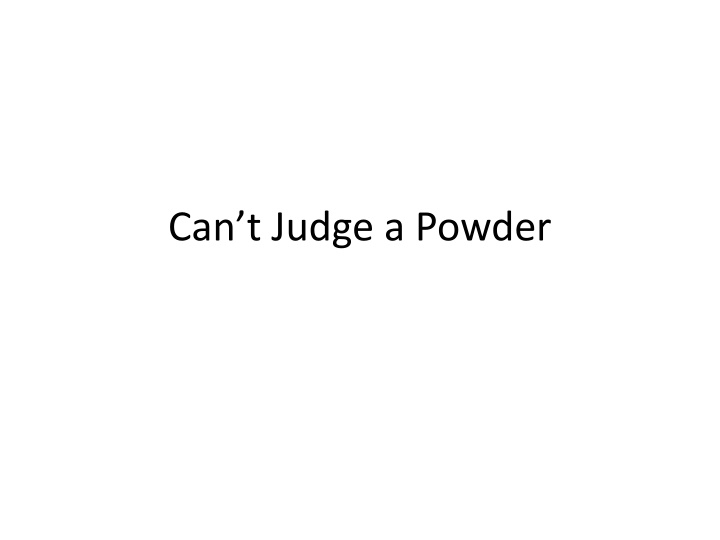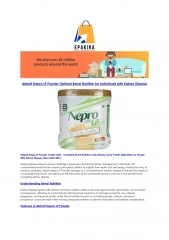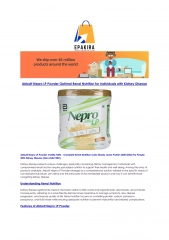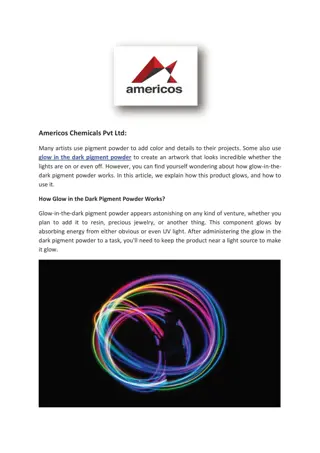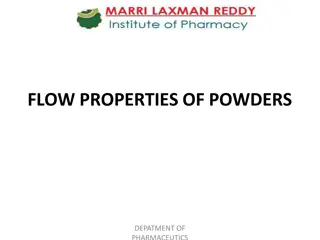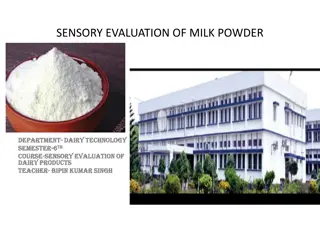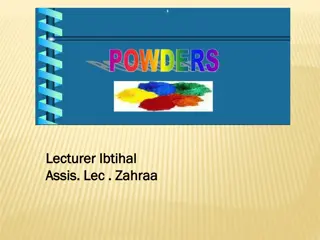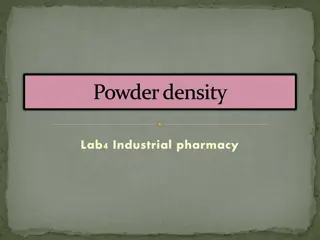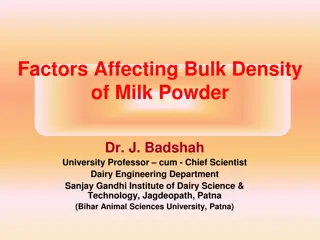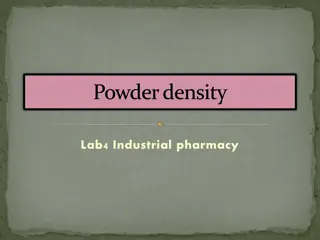Tips for Effective Powder Testing and Analysis
Explore the essential guidelines for testing powders, focusing on consistency, proper usage of pH paper, and conducting conductivity tests. Learn how to handle samples, water volume, pH paper, and various powder solutions accurately. These tips will help ensure reliable and accurate results in your powder analysis procedures.
Download Presentation

Please find below an Image/Link to download the presentation.
The content on the website is provided AS IS for your information and personal use only. It may not be sold, licensed, or shared on other websites without obtaining consent from the author.If you encounter any issues during the download, it is possible that the publisher has removed the file from their server.
You are allowed to download the files provided on this website for personal or commercial use, subject to the condition that they are used lawfully. All files are the property of their respective owners.
The content on the website is provided AS IS for your information and personal use only. It may not be sold, licensed, or shared on other websites without obtaining consent from the author.
E N D
Presentation Transcript
Consistency Be consistent with: The size of the sample The volume of water or any other liquid added Perhaps, the container for testing
Proper usage of pH paper Cut into small pieces that will fit into container for testing Do not place pH paper in a solution Use the tip of a stirring rod to spot a small piece of pH paper Read pH immediately
Testing Various Powders Across each spot plate Water, 1M HCl, 1M NaOH, 2- propanol(isopropyl alcohol), methanol First column: pH paper Second column: 2 drops Ca(NO3)2 2 drops Ba(NO3)2 2 drops AgNO3
Conductivities *Always test solution of the powder in water (aqueous) A solution showing conductivity A solution showing little conductivity
